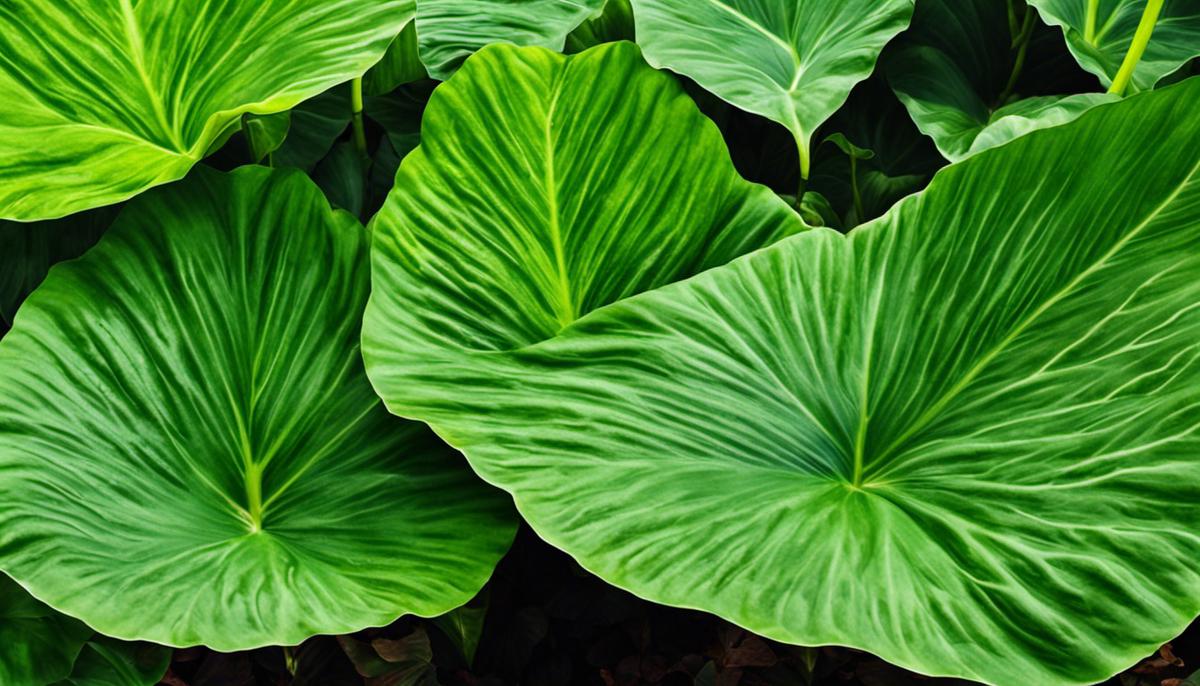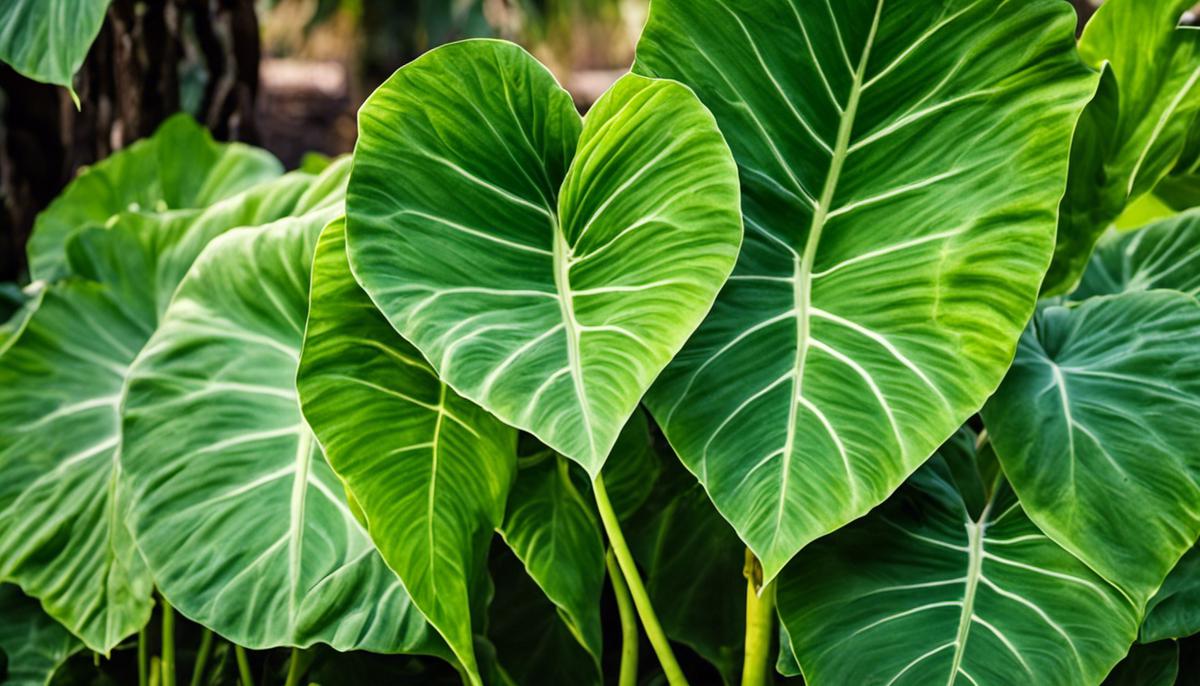
How to care for Elephant Ear Plants?
Description: Elephant ear plants, known for their large, distinctive leaves, not only bring a touch of tropical splendor to any space, but can also serve as expressive components when grown as part of a garden or indoor foliage. However, growing these beautiful plants requires detailed knowledge and understanding - from identifying the right location that provides ample humidity and indirect sunlight, to implementing precise planting and care techniques, and not least, effectively dealing with common pests and diseases. We shall dive deep into these aspects to assist you in successfully cultivating and maintaining your elephant ear plants. Dabbling in the captivating world of elephant ear plant cultivation may seem intimidating at first, but nothing compares to the satisfaction of nurturing these magnificent, showy foliage giants. Having already charted our journey through topics such as ideal light exposure, optimal temperature maintenance, correct watering methods, appropriate feeding, drainage-friendly soil selection, and the adequate spacing of Elephant Ear plants, let's delve into the finer intricacies of growing this tropical beauty artfully and responsibly. One aspect that's often overlooked, but highly integral, is the apt timing for planting elephant ears. Believe it or not, timing plays a dramatic role in the successful cultivation of our green friends. Spring is the best season, generally after the last frost for those managing colder climates. Waiting for the ground temperatures to reach about 70°F promotes the ideal conditions for growth. A fresh perspective lies in understanding the potting and repotting dynamics. Unlike other plants that dread being unsettled, elephant ears are relatively forgiving. They enjoy being repotted, especially when their roots run out of room. However, be wary of excessive repotting, a delicate balance needs to be struck, and once every 18 to 24 months should be adequate. As a note of caution, though elephant ears are impressive, they are actually mildly poisonous if ingested. Thus, it falls upon the gardener to ensure their placement is such that pets and young children can't easily access them. Ensuring their location fulfills both lighting and safety criteria becomes a fun challenge in spatial strategy. Pruning is another pivotal procedure involved in maintaining a healthy plant. Elephant ear plants will benefit from regular pruning which allows them to focus their energy on new growth. This process involves removing yellowed, wilting or dead leaves with a clean sharp instrument, taking utmost care not to harm the main stem. The grandeur of the elephant ear is matched only by its resilience. These plants can tolerate pests surprisingly well but aren't entirely immune. Some may encounter issues with spider mites, aphids, or mealybugs. Regular check-ups combined with organic insecticides will keep most threats at bay. Last but not least, an angle some gardeners tend to disregard is the winter preparations for our tropical friends. If residing in a cold climate, consider bringing potted plants indoors before the first frost hits. Alternatively, apply a thick layer of mulch for ground-planted elephant ears, ensuring their survival through the winter months, ready to stand tall as the spring sun returns. It's our belief that delving into these crucial, yet underlying aspects of Elephant Ear plant care, stands a hobbyist in good stead. Here's to thriving flora, and the joy that the simple act of seeing an Elephant Ear plant flourish can bring. Happy gardening, folks! Moving forward from the fundamental care practices for Elephant Ear plants, it's high time we address more intricate areas, particularly focusing on pest management and disease prevention. A common pitfall for enthusiastic Elephant Ear caregivers, these uninvited guests can cause significant damage if not appropriately dealt with promptly. Any gardener worth their salt knows that preventative action often trumps reaction, especially where pests are concerned. Regular and vigilant plant inspections prove essential. Look out for pesky foliage eaters like aphids, spider mites, and beetles. Never underestimate the importance of a thorough leaf underside scan, for these are a pest's favorite hideout. Encourage the presence of beneficial insects like ladybugs and lacewings that are natural enemies of these annoying pests. Some gardeners even find success using sticky traps around their Elephant Ear plants to catch flying bugs. Maintaining a balanced ecosystem within your setting can stretch a long way to peace between plants and pests. Pests, however, are just part one of our problem. Next to tackle is the question: how can we prevent diseases from wrecking havoc on our beloved Elephant Ear plants? Fungal diseases, often provoked by overwatering or using poorly drained soil, are notorious Elephant Ear nemeses. Avoid prevention pitfalls by ensuring the plant is never sitting in water. A simple, but crucial reminder: soggy soil is a no-go! High humidity is another red flag; therefore, ensure sufficient air circulation is provided. As a proactive measure, using fungicides can also be considered. Spraying the leaves and soil with a non-toxic organic fungicide can help a great deal in keeping diseases at bay. What if, despite your best efforts, a disease does break out? Then, it's time to fight tooth and nail. Infected leaves must be removed immediately to inhibit the spread. Remember, gardening is not about being flawless; even with pest incursions and occasional diseases. The very soul of our hobby lies in such challenges. Keep learning, experimenting, and growing as you continue on this spectacular journey of nurturing Elephant Ear plants. Eventually, you will cultivate not just plant life but a reservoir of incredible experiences and skills. Managing the health and vitality of elephant ear plants calls for consistent attention and care. Ensuring the appropriate location, taking care of specific planting requirements and meticulously observing for signs of pests and diseases - all of these steps are intertwined in a seamless dance that essentially shapes the health and growth of these stunning plants. Weathering these challenges not only extends their longevity, but also enhances their undeniable beauty. With the knowledge detailed in this essay, coupled with dedicated care, you are well-equipped to cultivate your own thriving elephant ear plants. Elephant Ear Plants It is one of the plants that are widely cultivated, especially for its large leaves and its beauty, as it gives a beautiful tropical appearance, and it resembles an elephant’s ear. The elephant ear plant requires little care and attention, in periods of drought, as it needs to be watered regularly, especially those that grow in pots, and although it is not necessary, it is possible to take a little agricultural fertilizer, to improve soil performance, and it cannot be Elephant's ear plants may remain outdoors in the winter, as freezing temperatures kill the plant and its leaves. Therefore, in areas with harsh and cold winters, it must be isolated in closed rooms away from the cold air.Choosing the Right Location

Planting and Care
The ABCs of Elephant Ear Plant Care: Unearthing the Details

Handling Pests and Diseases
Headfirst into the world of prevention, let's address pests, the number one elephant ear invaders.


How to care for Elephant Ear Plants?